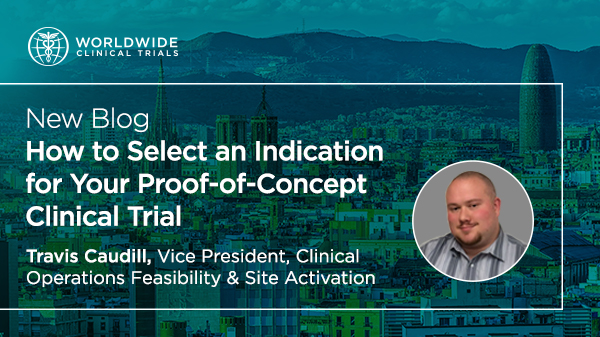
“What indication should we focus on to minimize the amount of investment required?” This is a common question that I hear from clinical study sponsors, both small and midsize, where discovery looks promising, the mechanism-of-action (MOA) is viable for a number of disease states, and there is a need to raise money to get through Phase II proof-of-concept clinical trials to partner or sell their assets.
Understanding Mechanism-of-Action to Choose an Indication
The primary focus in answering this question is scientific in nature, as it requires a deep understanding of the MOA and its activity within the candidate disease states for proof-of-concept trials. In these instances, Worldwide’s Feasibility Team can offer a fresh perspective by bringing the trial program costs into focus. Too often, this preliminary feasibility step is either overlooked by other contract research organizations (CROs) or oversimplified by technology platforms that generate standard responses.
At Worldwide, we provide the uncommon answer: “There’s no one size fits all.” So, how do we find the right fit for your clinical study? We’ll look at unique data sets and apply world-class analytical platforms to determine an ideal approach that fits your specific needs.
Before you decide which indication to focus on, it’s important to consider high-level enrollment modeling to support your clinical development plan.
Building a Predictive Patient Enrollment Model to Evaluate Costs
As a simplified example of preliminary feasibility, if the mechanism of action targeted inflammation, one might think about targeting rheumatoid arthritis, psoriasis, or Crohn’s disease based on market growth data. In each case, however, the set of phase II clinical studies would have different characteristics to evaluate. So what’s the right indication?
Data from the past 10 years shows that at least four countries would be needed if targeting psoriasis or Crohn’s disease and six countries for rheumatoid arthritis. Consider also that enrollment in phase II averages about 100 participants to get proof-of-concept in Crohn’s disease versus more than 250 patients with psoriasis.
One would need more patients for psoriasis than for Crohn’s, but the average cost per patient is lower for psoriasis. Plus, patient enrollment will differ for biological-naïve populations versus those who have experienced a failed biological treatment.
This small example shows the way preliminary feasibility can offer uncommon insight when combined with expert opinions from medical and scientific affairs. If you have questions about feasibility and site selection topics, please connect with Travis through our general contact form.
Connect with Travis at the Outsourcing Clinical Trials EU Meeting
Join Travis and some of our other experts on May 15, 2018, at the Outsourcing Clinical Trials EU meeting in Barcelona, Spain, where he’ll be discussing this topic in “Using the Right Predictive Model at the Right Time to Conduct Clinical Feasibility.”


